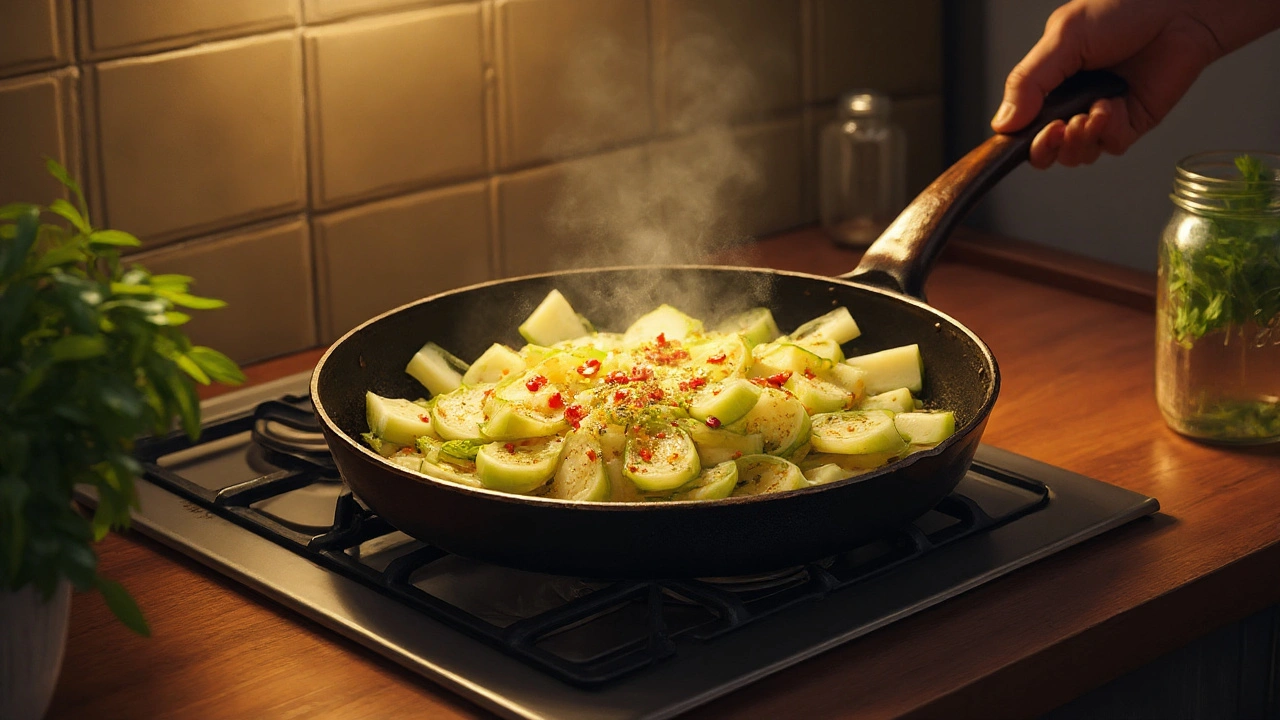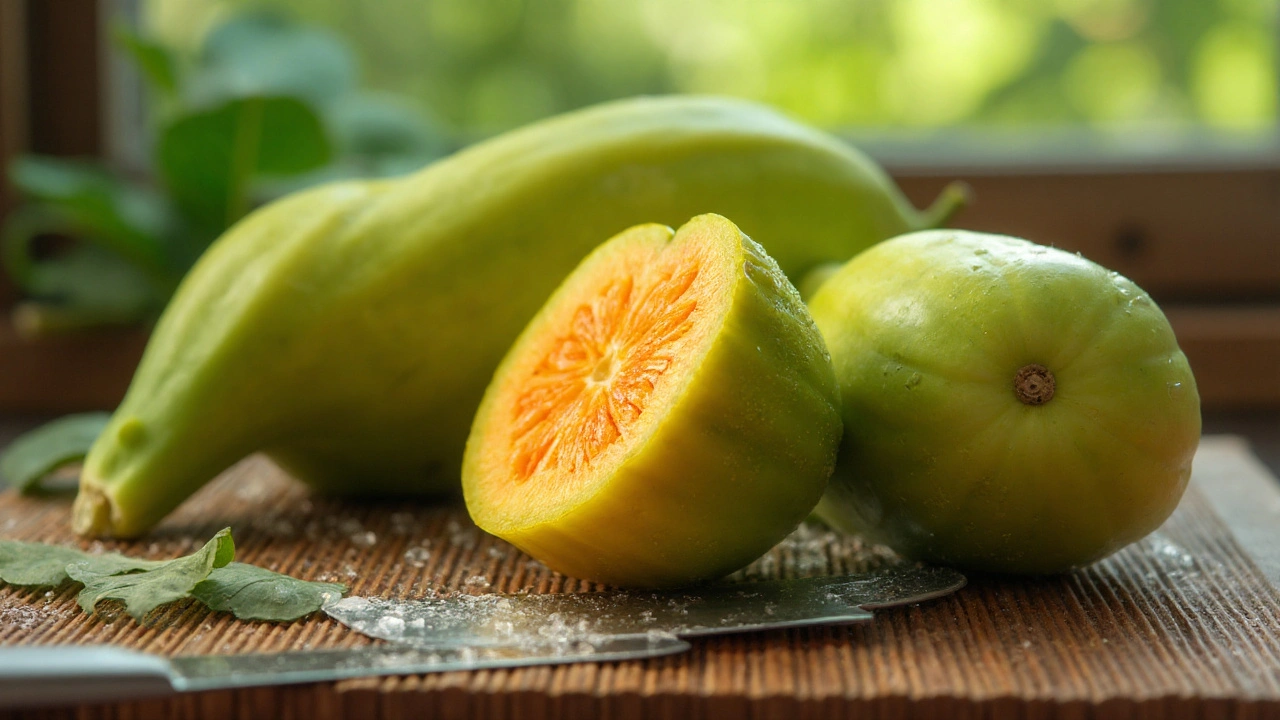TL;DR
- Karela is the Indian name for bitter melon, a tropical fruit packed with vitamins, minerals, and compounds that help regulate blood sugar.
- One medium fruit delivers ~50% of daily vitamin C and a solid dose of iron, potassium, and fiber.
- Buy firm, green fruits with smooth skin; store in the fridge for up to a week.
- Quick prep: slice, salt to reduce bitterness, then rinse and stir‑fry with garlic, onions, and a splash of lime.
- Home gardeners can grow karela in pots or beds with warm soil, plenty of sun, and regular watering.
What Is Karela?
If you’ve wandered through an Asian market and spotted a spiky green fruit that looks like a cucumber crossed with a cactus, you’ve met karela - also known as bitter melon, bitter gourd, or Momordica charantia. It’s a staple in Indian, Chinese, and Caribbean cooking, prized for its sharp, peppery bite and its reputation as a natural blood‑sugar regulator.
While the name might sound exotic, the fruit itself is pretty straightforward. It grows on a climbing vine, and each fruit is ribbed, elongated, and covered in tiny white hairs. The flesh is white, dotted with soft seeds, and the skin turns from deep green to yellow as it ripens.
In my kitchen, Rupert (my big Bernese) sniffs the raw slices with curiosity, but Tabitha the cat prefers the smell from afar - she’s not a fan of that bitter kick.
Nutrition and Health Benefits
One of the biggest draws of karela is its nutrient density. A 100‑gram serving (about half a medium fruit) provides:
- Calories: 34
- Protein: 1.0g
- Carbohydrates: 7.0g (2g fiber)
- VitaminC: 84mg (≈140% RDI)
- VitaminA: 112µg (≈12% RDI)
- Iron: 0.7mg (≈4% RDI)
Beyond the basics, karela is loaded with phytochemicals called charantin, momordicin, and polypeptide‑p. Researchers at the University of Delhi (2023) found these compounds can improve insulin sensitivity and lower fasting blood glucose in type‑2 diabetics. That’s why you’ll often see it recommended in Ayurvedic medicine for “sweet‑blood” balance.
Other health perks include:
- Antioxidant boost: VitaminC and flavonoids fight free radicals, supporting skin health and immune function.
- Digestive aid: The fiber and bitter compounds stimulate gastric secretions, easing constipation and promoting a healthy gut.
- Weight‑friendly: Low in calories but high in satiety‑inducing fiber, it’s a great addition to calorie‑controlled meals.
- Anti‑viral potential: Lab studies suggest extracts can inhibit replication of certain viruses, though human data are still early.
Bottom line: If you’re looking for a food that does more than fill your stomach, karela earns a spot on the plate.

How to Buy, Store, and Prep Karela
Picking a good fruit is the first step to a tasty dish. Here’s what to look for:
- Firmness: Choose fruits that give a little pressure but don’t feel mushy. \n
- Skin: Bright, unblemished green is ideal. Yellow‑tinged skins are over‑ripe and much sweeter, but also more bitter.
- Size: Medium‑sized (6‑8inches) are easier to handle and have a balanced flavor.
Store your karela in a zip‑top bag in the vegetable drawer of the fridge. It will stay fresh for 5‑7days. If you’ve bought a lot, slice it, sprinkle with salt, let it sit 15minutes, then rinse - this not only cuts bitterness but also prevents oxidation.
Now the prep:
- Wash: Rinse under cool water, scrubbing the skin gently.
- Slice: Cut off the ends, halve lengthwise, and scoop out the seeds with a spoon.
- Salt & rinse: Sprinkle 1‑2tbsp of coarse salt, toss, wait 10‑15minutes, then rinse well. The salt draws out bitter juices.
- Dry: Pat dry with a clean towel before cooking.
Quick tip: If you’re cooking for kids (or picky adults), a splash of lemon or lime juice after cooking brightens the flavor and masks excess bitterness.
Simple Recipes to Enjoy Karela
Ready to turn that green oddity into a delicious side? Below are three fool‑proof recipes, each under 30minutes.
1. Classic Indian Stir‑Fry (Karela Sabzi)
- Heat 1tbsp oil in a skillet over medium heat.
- Add ½tsp mustard seeds; let them pop.
- Throw in 1finely chopped onion and 2 minced garlic cloves; sauté until golden.
- Stir in the sliced karela, ½tsp turmeric, ½tsp cumin, and a pinch of chili powder.
- Cook, stirring occasionally, for 8‑10minutes until the fruit is tender but still a bite firm.
- Finish with a squeeze of fresh lime and a sprinkle of cilantro.
Serve hot with roti or steamed rice. The spices complement the bitterness, making a balanced dish.
2. Karela Chips (Healthy Snack)
- Preheat oven to 200°C (400°F). Line a baking sheet with parchment.
- Slice karela very thin (about 2mm) using a mandoline.
- Toss slices with 1tbsp olive oil, a pinch of salt, and a dash of smoked paprika.
- Arrange in a single layer; bake 12‑15minutes, turning halfway, until crisp.
- Cool and enjoy - they’re crunchy, tangy, and guilt‑free.
3. Sweet‑Sour Karela Soup (Chinese‑Style)
- In a pot, bring 4cups chicken or vegetable broth to a simmer.
- Add 1cup sliced karela, ½cup diced tomatoes, and 1tbsp grated ginger.
- Season with 1tbsp soy sauce, 1tsp rice vinegar, and a pinch of sugar.
- Simmer 10‑12minutes; stir in chopped green onions just before serving.
This soup balances bitter, sour, and umami - perfect for chilly evenings.

Growing Karela at Home + FAQ
If you’ve ever wished you could pick fresh bitter melon right from your garden, you can. Karela is surprisingly easy for a beginner, as long as you meet a few basics.
Growing Basics
- Climate: Warmth is a must - ideal temps 24‑30°C (75‑86°F). In cooler zones, start seeds indoors 4weeks before the last frost.
- Soil: Well‑draining loam with pH 6.0‑6.5. Add compost or aged manure for fertility.
- Planting: Sow seeds ½inch deep, spacing vines 3feet apart. Use a trellis or sturdy stakes; the vines can climb 10‑15feet.
- Water: Keep soil consistently moist, but avoid water‑logging. Mulch helps retain moisture.
- Harvest: Pick fruits when they’re 4‑6inches long and still green. The longer they stay, the more bitter they become.
Common Questions
- Can I grow karela in pots? Yes. Choose a 12‑inch container with good drainage, use a rich potting mix, and provide a vertical support.
- Why are my fruits turning yellow too fast? That signals over‑ripening or insufficient water. Keep soil evenly moist and harvest promptly.
- Is the bitterness a sign of poor quality? Not at all; bitter melons are naturally bitter. If you want milder flavor, choose younger, smaller fruits.
- Do pets eat karela? Generally, pets like Rupert and Tabitha avoid it. Large amounts could cause stomach upset, so keep it out of reach.
- Can I freeze karela? Yes. Blanch slices for 2minutes, cool in ice water, pat dry, and freeze in zip bags for up to 6months.
With a little patience, you’ll have a steady supply of fresh, nutrient‑rich bitter melon to experiment with in the kitchen.
